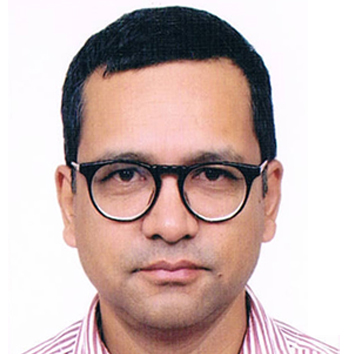Columns
‘Jhur’ idea of a university service commission
Universities that cannot recruit desired faculty are not autonomous institutions.
Pratyoush Onta
For some time now, the Nepali public at large has been criticising the quality of journalism rendered by our country’s traditionally influential print news outlets. This criticism is partially based on some valid concerns regarding the creation of journalistic outputs that do not seem to adhere to the basic protocols of the profession. Unidentified sources tend to get used too often. Single-source stories—including those on higher education that I read carefully—have frequently resulted in very biased outputs. Journalists are often also accused of doing the bidding for their sahujis (owners of the newspaper concerned). However, despite the long list of complaints, I have never heard anyone say that a solution to these shortcomings of journalism in Nepal should be establishing a public institution with a name like Rastriya Patrakarita Sewa Ayog (national journalism service commission).
Headed by a retired senior journalist, this fictional ayog would consist of members representing the Loksewa Ayog (Public Service Commission, a constitutional body) and several other sectors which are constituencies of journalism in our country. Procedurally operating in a manner that resembles the Loksewa Ayog, the national journalism service commission would recruit journalists, train them and then place them in various media institutions. These journalists, then, the fictional commission would have us believe, “improve” the quality of journalism across the traditionally influential print media outlets.
There is a good reason why no one has suggested creating something like a national journalism service commission. Although people are not happy with the shortcomings of our media institutions, they know that such a commission is not the answer to redress those shortcomings. First of all, members of the public know that media outlets are autonomous bodies legally created by using various possibilities allowed by the current laws of the country. Second, they know that even though Nepal’s private media institutions benefit partially from public money via advertisements provided by public sector institutions and some subsidies provided by the Press Council Nepal, public control of legally autonomous private media institutions via the (fictional) journalist placement regime would not be the needed solution in this case.
Quite the contrary, the public knows that such a cure would be worse than the disease itself since such placement of personnel by a public institution in private media institutions would almost surely compromise the latter’s ability to scrutinise the performance of all three levels of government in federal Nepal. If you are a believer, you can thank god for the fact that members of the public have not resorted to this level of stupidity when suggesting how Nepal’s traditionally influential print media outlets can be “improved”.
Now come out of that fictional world and ask yourself why, in the currently proposed higher education bill, there is a provision (article 36) for a university service commission for all universities that the bill identifies as “central universities” (actually, article 39 seems to suggest that proposed commission’s remit will cover other universities as well). Forget for the moment that the bill fails to clearly distinguish why only six of the currently operational universities in the country should be declared “central” universities.
The bill further says that such a university service commission should be headed by either a retired professor or a retired senior bureaucrat of the Government of Nepal and consist of a member of the Loksewa Ayog (or someone designated by it) and three senior professors including one woman professor. It also says that the suggestion committee to select the chair and the professor members of the university service commission should be headed by the chair of the Loksewa Ayog, and one of the two other members should be the secretary of the Ministry of Education!
Let us backtrack a bit and get some perspective. With the proposed provision of the single university service commission, this higher education bill is actually saying that the legally autonomous separate universities cannot recruit their faculty members themselves. Instead, such faculty will be appointed by the university service commission headed, in all probability, by a former bureaucrat selected by a committee led by the chair of the Loksewa Ayog. In other words, the bill says, through its provisions, that recruiting faculty is like recruiting bureaucrats with fixed darbandi for each university! The university service commission will, the bill adds, determine the curriculum for the written tests that faculty candidates will have to take initially and all the rest of the details of the recruitment and promotion process.
Let us think about the implications a bit. As my colleague Devendra Upreti and I argued in an essay published five years ago, the first casualty is the autonomy of universities. Its faculty members, in particular their academic abilities and proclivities, provide the most distinguishing feature of any university. While this has probably always been the case, this is especially so in modern research-oriented universities. If any single university cannot even recruit the faculty members that it thinks should be hired to teach in its academic programmes, then it is not an autonomous academic institution.
Second, such a provision makes the process of faculty recruitment unnecessarily cumbersome and slow. Third, why would faculty members thus hired be loyal to their universities if their recruitment and promotions are actualised by the external institution, namely, the university service commission? Finally, why would specialist researchers want to join any university when their recruitment process entails an SLC-like exam at the starting point administered by an external agency?
Faculty recruitment should be a matter foundationally based on academic specialisation and competence and should be handled by each university at the level of departments and their supervising deans. If the universities can’t even hire their faculty members directly, then they are, for all practical purposes, extensions of a government department manned by a non-academic civil bureaucrat (in this case, the Ministry of Education of the Government of Nepal).
As noted by academic-lawyer Dr Bipin Adhikari in a write-up on himalkhabar.com, it is clear that the government wants to strangle Nepal’s higher education institutions through a bill that ensures that the country’s higher education sector is controlled by bureaucrats. The one set of arrangements regarding faculty recruitment examined here is enough to suggest that the minds that crafted this higher education bill actually better suit the government of Rana Premier Chandra Shamsher of 1924 than a country that in 2024 is officially a federal democratic republic. The bill has nothing of the spirit of federalism nor that of democracy and will not cure the structural and other shortcomings of our higher education landscape.
It is also clear that the mindset that generated the idea of a single university service commission is long-standing. It was mentioned in the Higher Level National Education Commission report—2075 BS and the Higher Education Policy, 2072 BS. Such a mindset is unsuitable for Nepal’s loktantra and the fostering of pluralism in Nepal’s higher education sector, a theme I have highlighted repeatedly in this column over the past year. Those who want to govern Nepal’s higher education landscape could learn a thing or two from why Nepal’s public has not asked for a Rastriya Patrakarita Sewa Ayog and do the needful.




 10.12°C Kathmandu
10.12°C Kathmandu















